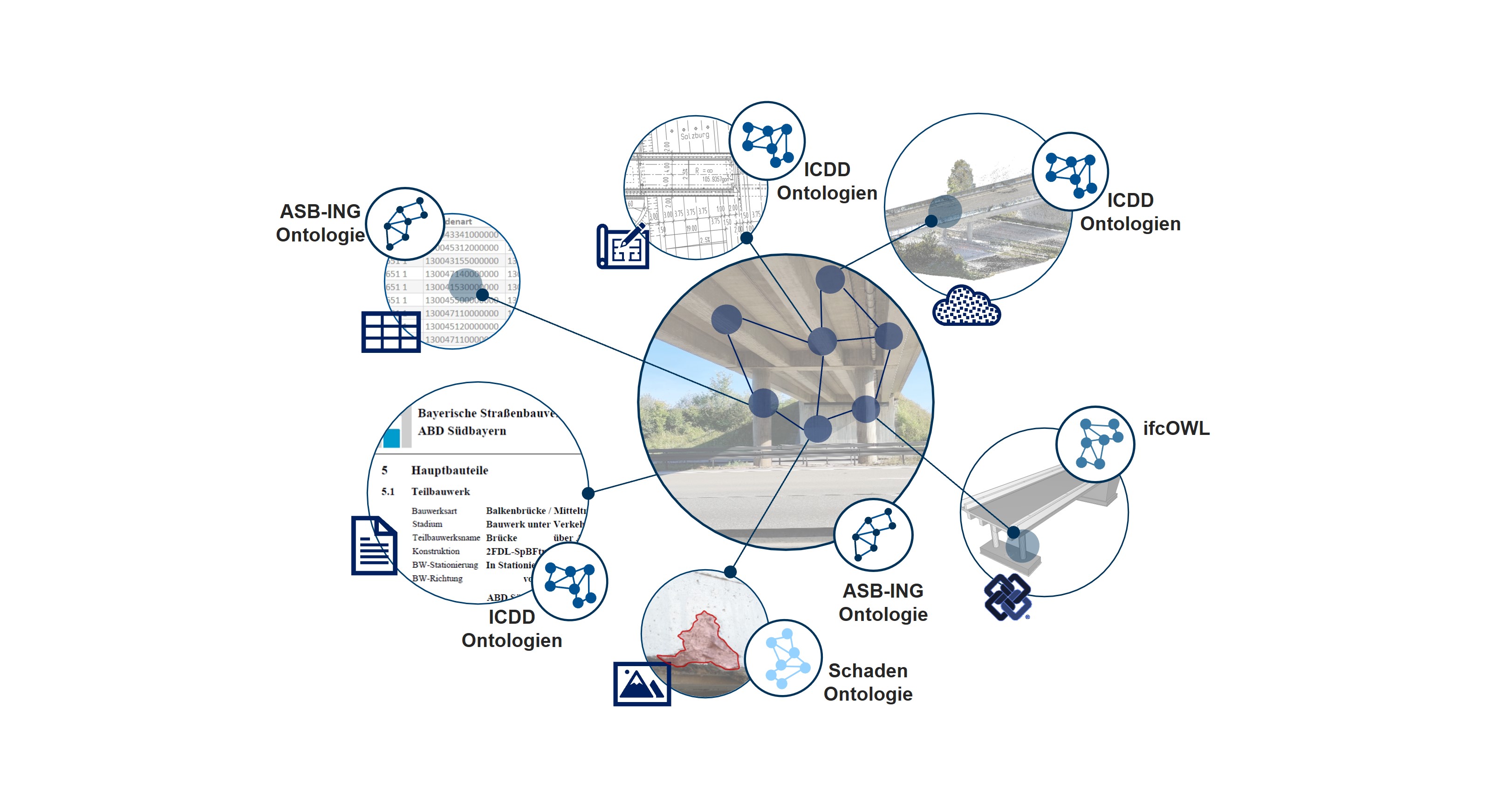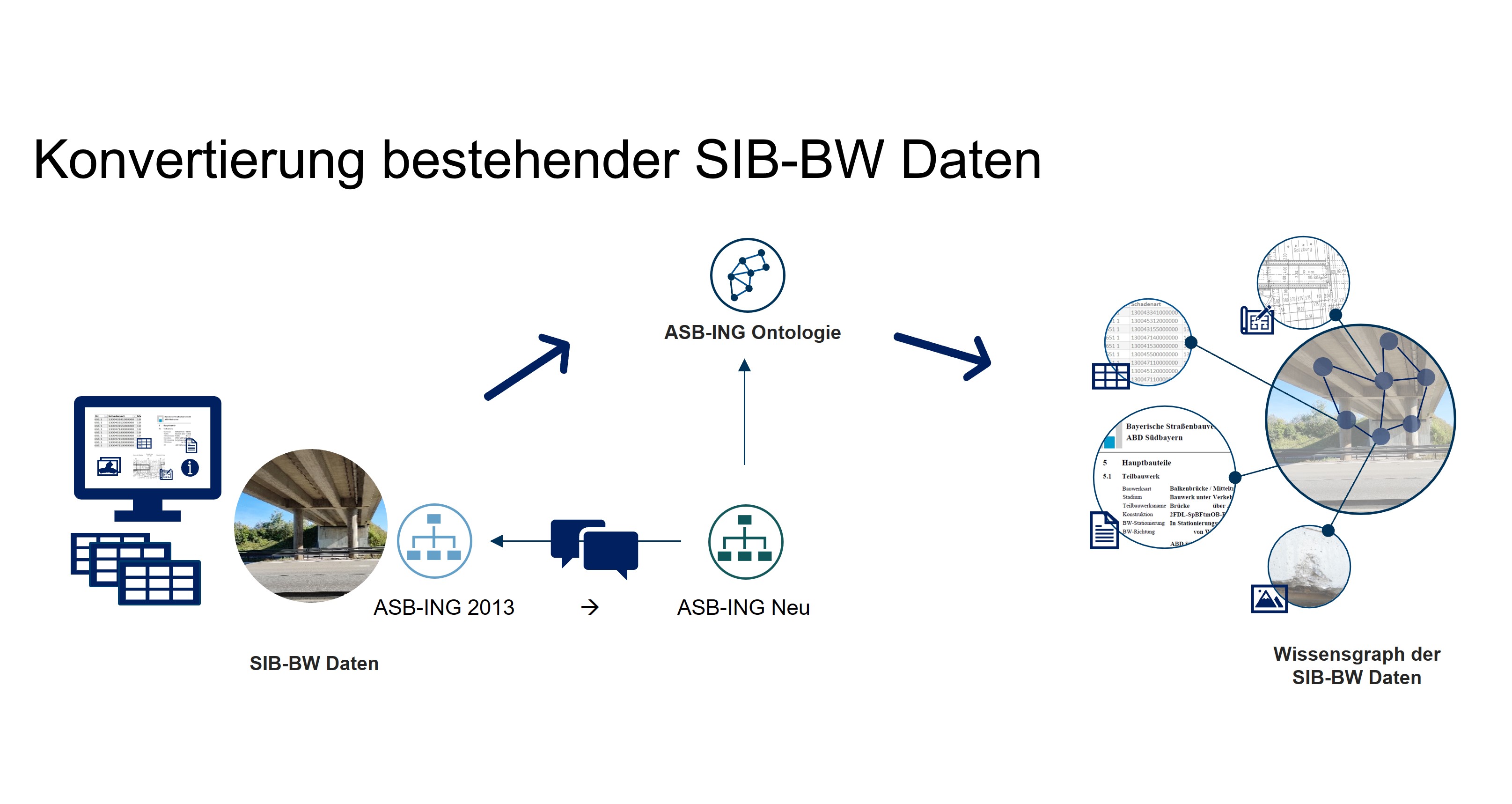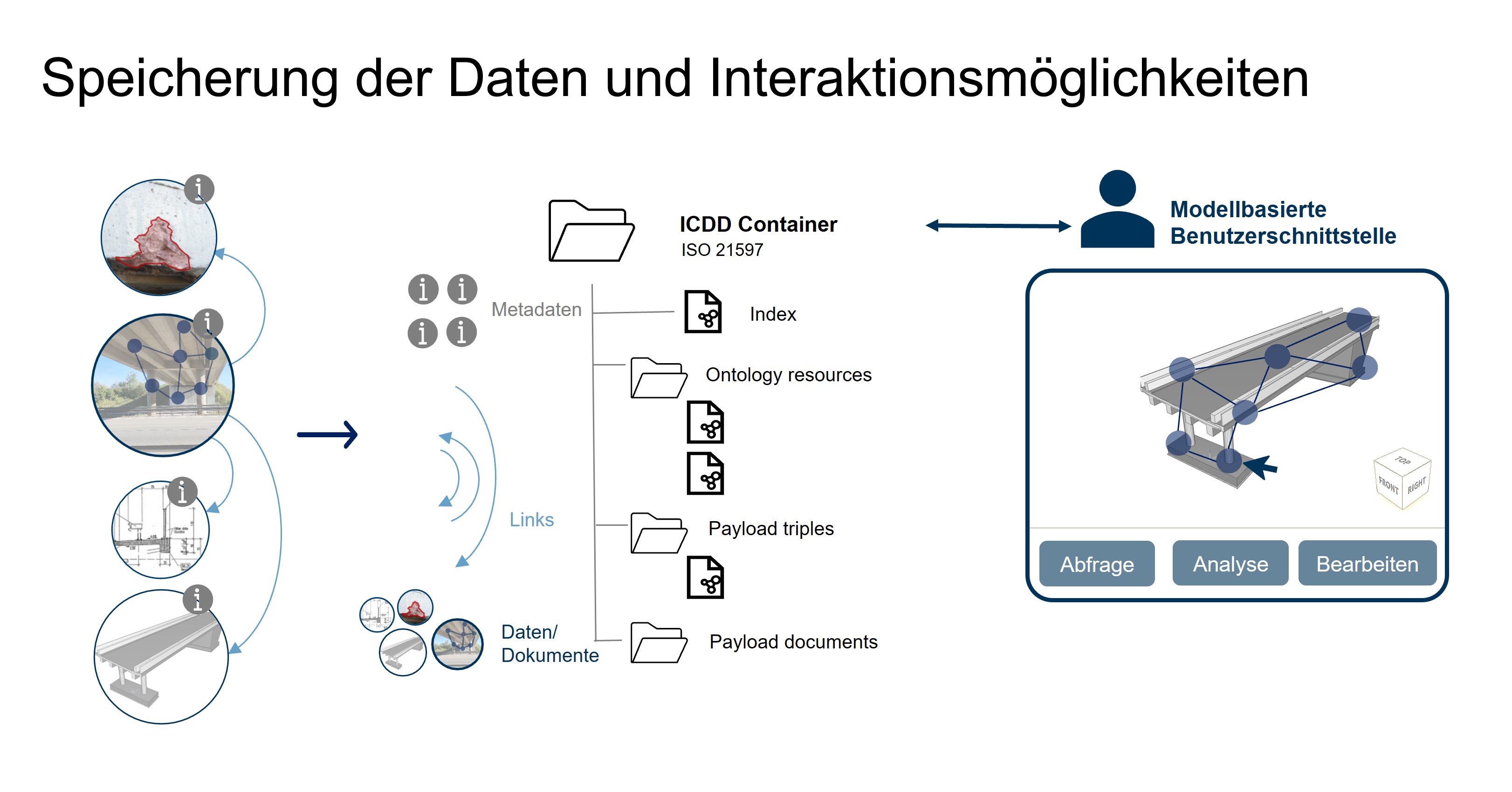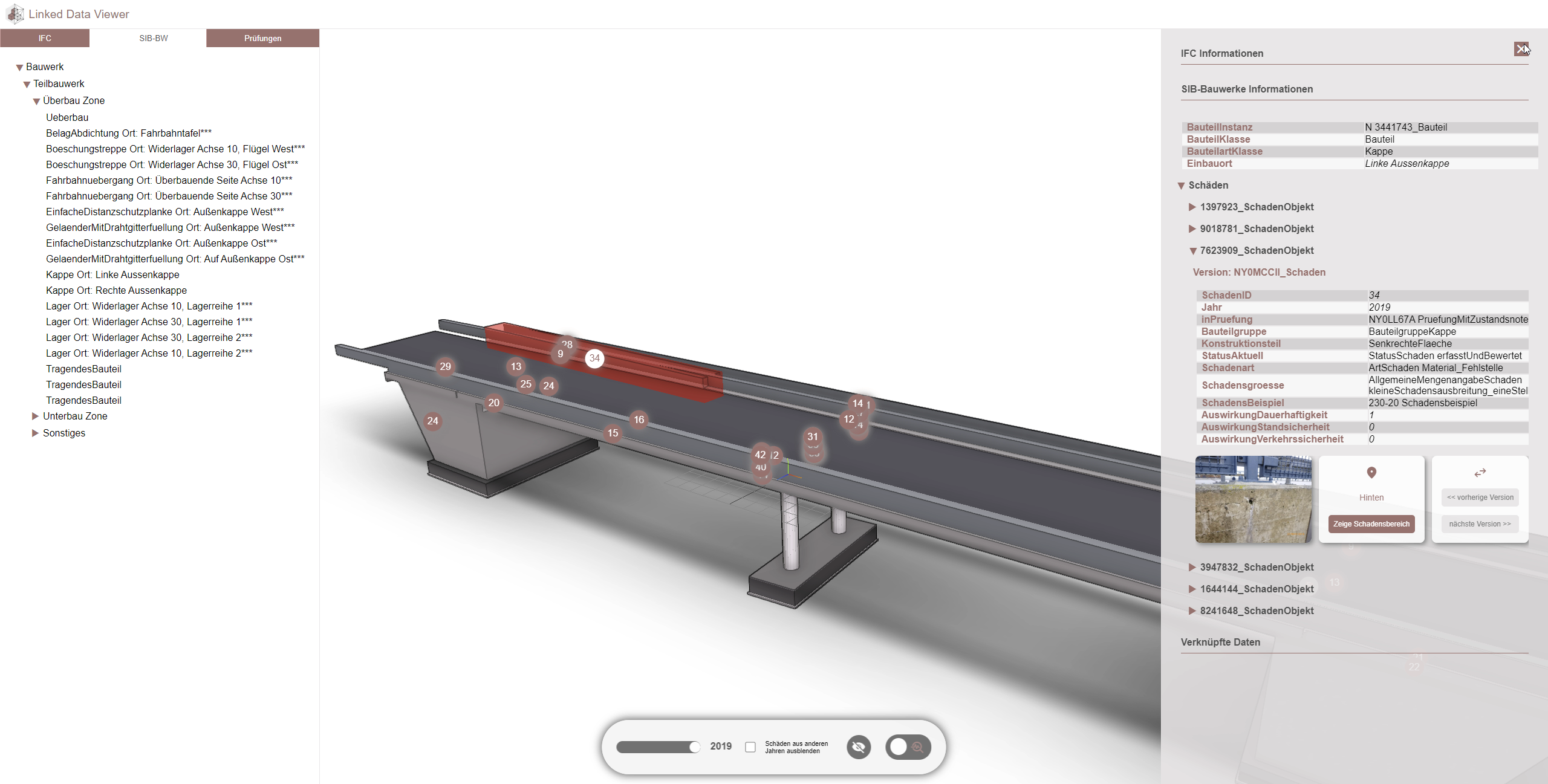TwinGen
Viewer
The TwinGen Viewer is published here :
https://design-computation-rwth.github.io/LinkedDataViewerPublic/
Project information:
Funding agency: Bundesministerium für Digitales und Verkehr
Runtime: 2020 - 2022
Partners:
-
RWTH Aachen, Geodätisches Institut und Lehrstuhl für Bauinformatik & Geoinformationssysteme
-
Ruhr-Universität Bochum, Lehrstuhl für Informatik im Bauwesen
Researchers:
Research aim
The aim is to develop methods for the largely automated generation of high-quality digital twins of existing infrastructure structures (e.g. roads, bridges, hydraulic engineering works) as a basis for operation and maintenance. The sub-processes to be developed include the acquisition and processing of point clouds (e.g. by laser scanning or photogrammetry), extraction of geometric and semantic information using digital image processing, use of knowledge databases for semantic model generation and the evaluation of technical drawings using machine learning. A major challenge is to extract the semantic information from the as-built documentation and the as-built survey and to enrich the digital twin. Furthermore, methods are to be applied to make the condition of a building assessable on the basis of images and point clouds.
Research focus of DC
In the course of the project, the chair takes on the responsibility to make Digital Twins available, linkable and analyzable.The cross-modal, multi-media linking of previously loosely structured data sets and information is carried out with methodical approaches and technical standards of Linked Data and Semantic Web Technologies.
Research results
A central component of the research was the processing of existing, heterogeneous bridge data from proprietary database systems into open data formats of the Semantic Web, enabling the data to be interlinked. In this context, the predefined structure of bridge documentation data (ASB-ING) was transformed into an ontology. This enabled the conversion of the data sets from the construction database into the Linked Data Format.
In the second step of the research work, the converted data was linked on object-level with the results of the other work packages (point cloud, model, segmented damage pictures) and stored in a structured way in an ICDD container. On this basis, a prototypical viewer was finally developed that can display and query the semantic data from the existing database overlaid with the newly acquired 3D data.




